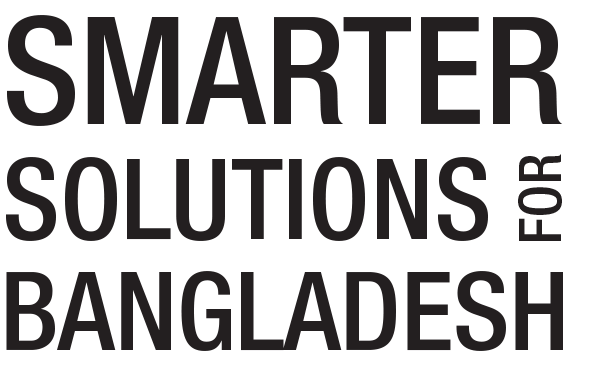RMG: Smartest Strategies
by Bjorn Lomborg
Bangladesh’s manufacturing sector has grown steadily as the country has industrialized. Manufacturing now accounts for 30 percent of GDP, nearly double the share that agriculture does. That industry is largely driven by the readymade garment (RMG) sector, which represents a whopping 85 percent of all export earnings and employs 4 million people, 80 percent of whom are women.
While global demand for RMG products is expected to surge in coming years, Bangladesh’s sector must continue to progress and evolve in order to take advantage. Some of the RMG industry’s most pressing current issues include poor compliance, inadequate infrastructure, and meager power capacities, all of which hinder overall competitiveness.
What are the smartest strategies to ensure a dynamic future for the readymade garment industry? Bangladesh Priorities provides solutions to this and many other challenges. The partnership between the Copenhagen Consensus Center and BRAC has commissioned dozens of top economists from Bangladesh, South Asia, and the world to study how the country can do the most good for every taka spent on her development efforts.
New research by a team of four Bangladeshi economists, led by Wasel Bin Shadat, a lecturer at the University of Manchester, examines investments that will improve Bangladesh’s vital RMG sector, ensuring the industry is well placed to compete globally.
| Strategy | Takas of benefits per taka spent |
|---|---|
| RMG factory compliance | 14 |
| RMG Palli special zone | 8 |
The first strategy aims to expand compliance industry-wide. Bangladesh has made progress toward eliminating child labor and curtailing long working hours, but the Tazreen Fashion fire of 2012 and the Rana Plaza collapse of 2013 demonstrate that compliance is still lacking in many respects, particularly when it comes to safety. These disasters have focused global attention on Bangladesh’s sector, heightening consumer awareness about garment production and making improvements in compliance even more crucial to ensuring sustainable growth of the industry.
Ensuring that companies comply with safety regulations is important not only for worker safety but also to increase opportunities to export. Better compliance across the RMG industry would require initial investments to improve physical infrastructure and fire protection, as well as funding for operations costs to maintain high levels of compliance from year-to-year. The authors estimate that industry-wide compliance would cost between Tk 164 billion (Tk 16,400 crore) and Tk 234 billion (Tk 23,400 crore).
The RMG industry would benefit in multiple ways. Greater compliance reduces the probability of accidents, increases productivity, lowers employee turnover, and makes the sector more attractive to both existing and new buyers. Based on the research, factory compliance instituted across the sector would boost export earnings by an estimated 10 percent. This would help ensure that the RMG sector reaches its self-defined target for a total export value of Tk 3.9 trillion (Tk 390,000 crore), or USD 50 billion. Driven mostly by the export increase, the overall benefits from investing in RMG compliance would then be 14 times higher than the costs.
The economists’ analysis makes a second, related proposal: they evaluate a current plan to create an RMG Palli “special zone” that’s perfectly suited for garment production. This area would essentially be an industrial park, with ample infrastructure for factories and straightforward ways to monitor compliance, allowing firms to produce readymade garments efficiently and safely.
A separate RMG zone would allow factories to cluster in a single geographic location, which would reduce production costs, allow for simple transfer of knowledge and technologies, make pollution mitigation easier, and promote other positive spillover effects. A Chinese firm has already performed feasibility and environmental studies for the 530-acre Palli zone for Bangladesh that would include utility services, medical facilities, pollution treatment plants, daycare centers, and other similar infrastructure. The zone would employ an estimated 300,000 people at more than 250 factories.
The analysis estimates that due to the creation of such an RMG Palli, there would be an additional 142 factories over the next three years, when compared to the long-run growth of the industry. The incremental costs to build these additional factories are estimated to be Tk 1.3 billion (Tk 129.1 crore).
Thanks to increased productivity and better capacity utilization within the special zone, the authors estimate that the total export earnings from the more than 250 factories would equal Tk 312 billion (Tk 31,200 crore). Each taka spent on the investment would do an estimated 8 takas of social good.
The RMG sector is the backbone of Bangladesh’s manufacturing sector, and with smart investments, the industry is poised to make even more future progress. Where would you choose to spend money if you were in charge and wanted to do the most good for Bangladesh? Let us hear from you at copenhagen.fbapp.io/rmgpriorities. We want to continue the conversation about how to do the most good for every taka spent.
Dr. Bjorn Lomborg is president of the Copenhagen Consensus Center, ranking the smartest solutions to the world’s biggest problems by cost-benefit. He was ranked one of the world’s 100 most influential people by Time Magazine.
This article was originally posted in The Daily Star.


